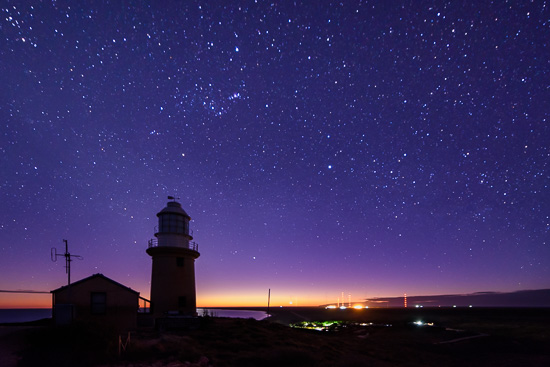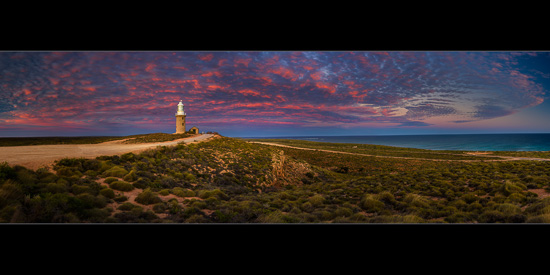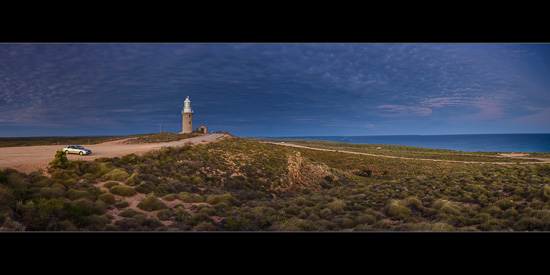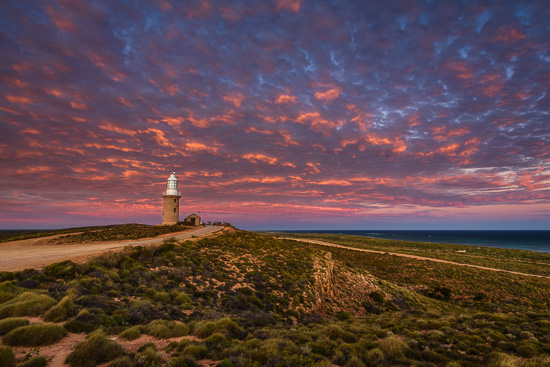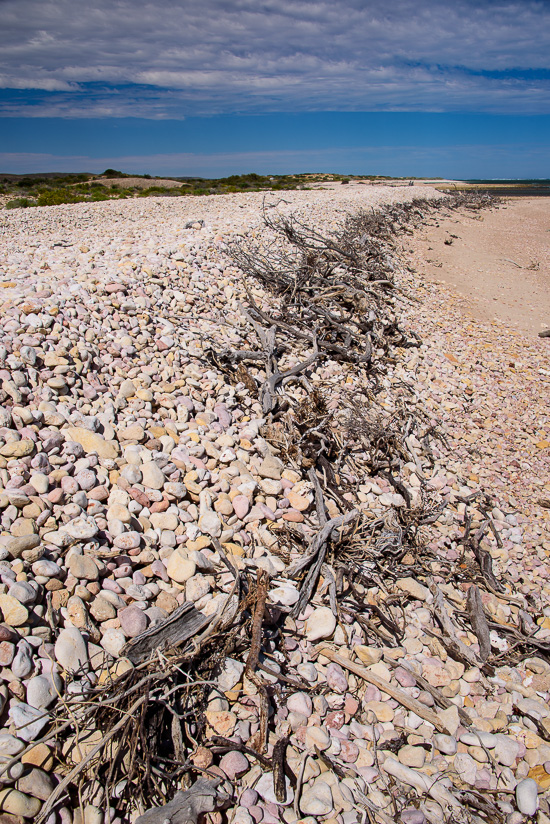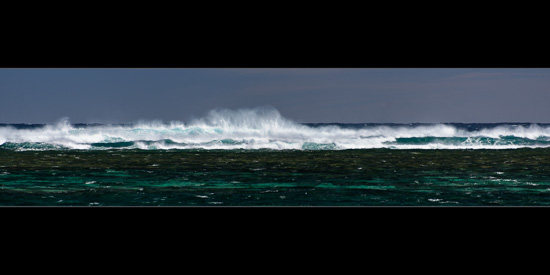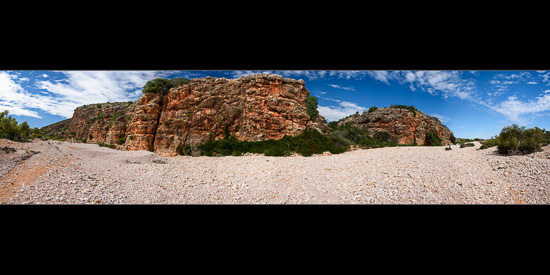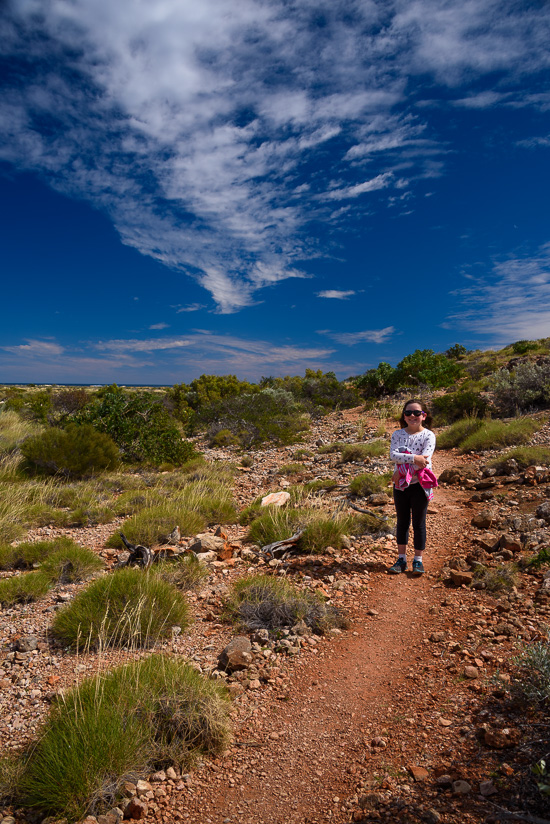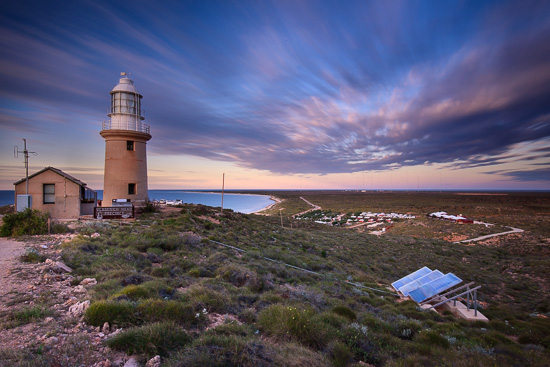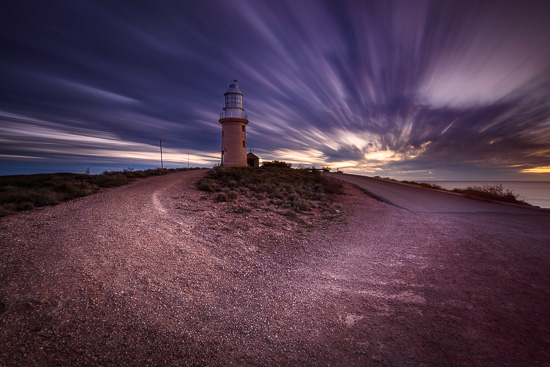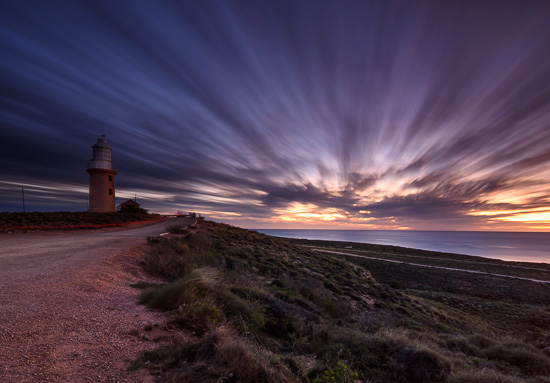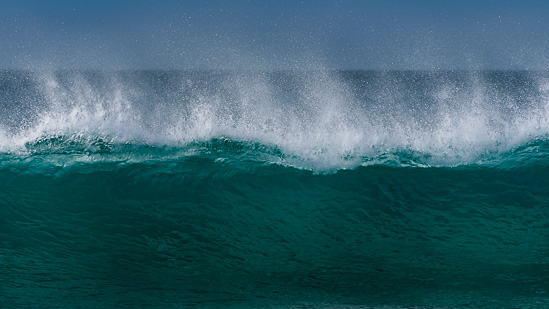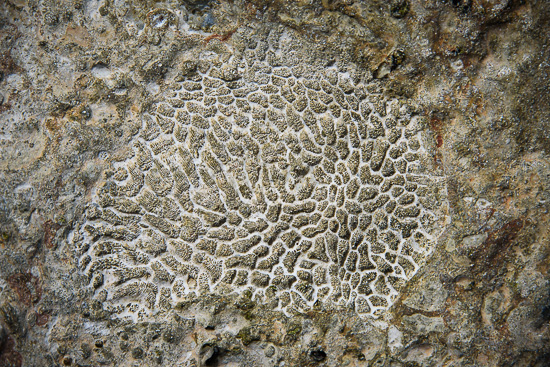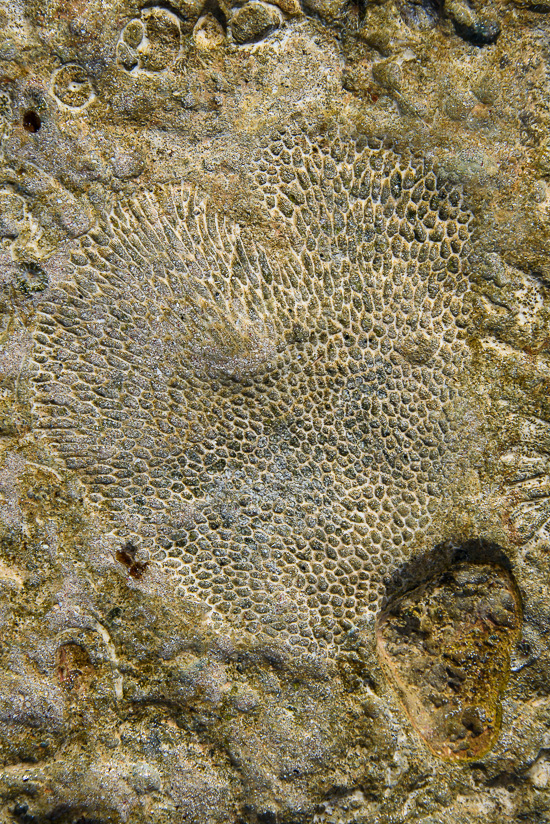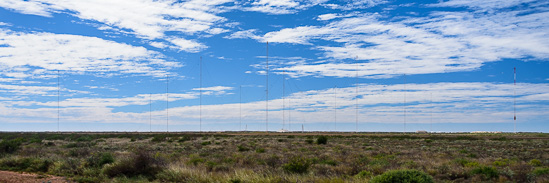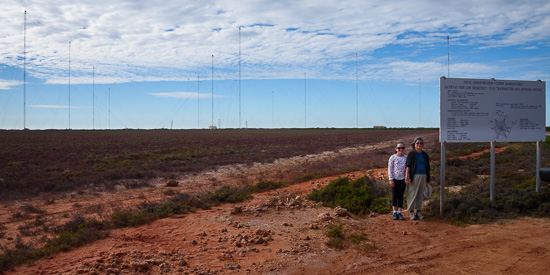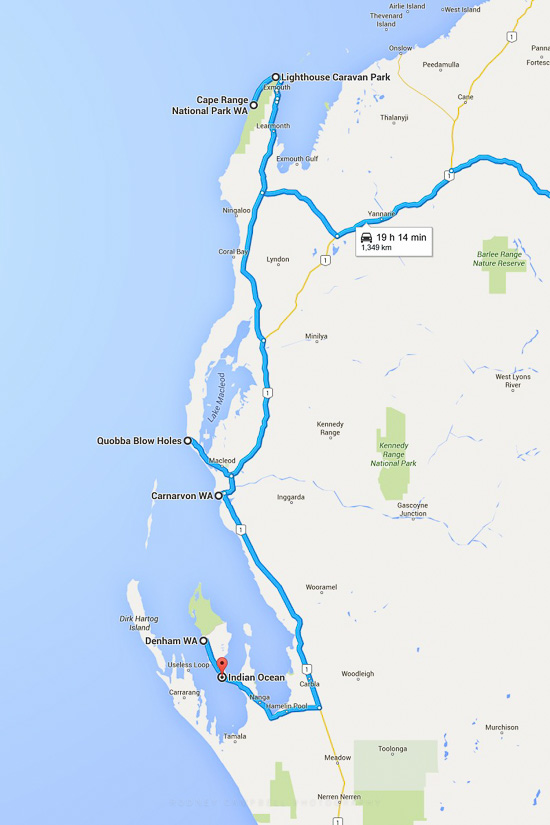Archive for April, 2016
Sunrise at Vlamingh Head…
by Rodney Campbell on Apr.13, 2016, under Life, Photography
We were leaving Exmouth today so I rose early and headed up to Vlamingh Head Lighthouse again to shoot the sunrise.
As I’d mentioned in a previous post the site offers spectacular views of the coast and is also one of the few places in Australia which is ideal for both sunrises and sunsets.
I’d arrived quite early (sunrise wasn’t till almost 7AM and I was already shooting at 5:45AM).
I had only a few minutes of astro twilight left to go and since the skies were mostly clear I figured I’d try some shots with the stars.
VLF Stars
Note: These photographs (especially the wider shots) look much better when larger – so click any of the images below to see larger versions in an inline overlay slideshow gallery viewer.
This one at 5:47AM includes the VLF array in the distance (lit up at night) and the Vlamingh Head Lighthouse silhouetted in the foreground. Sunrise is over the horizon pretty much straight in front of us so it’s not an ideal direction to face. Still I was able to shoot this at ISO 4000 and 30 seconds with the trusty Samyang 14mm. Lots of distortion and stretching results when I manually corrected for the massive convergence and bowing of the parallel lines when angling the lens up towards the sky.
Within minutes it was too bright to shoot the stars so I switched to normal landscaping mode. I tried a number of compositions but nothing I was happy with – maybe the morning would be a bust :(.
Eventually I moved quite a way from the lighthouse (on the other side) and shot back at the lighthouse and the wider view with the sunrise sort of behind me. As luck would have it the sky turned from empty almost cloudless to filled with these small puffy white clusters.
6:45AM (about ten minutes to sunrise) and the weather Gods have smiled upon me. The rising sun hit the upper sky and lit all my puffs in a brilliant display of reds and pinks set against the deep purples and blues of the twilight sky behind.
This is an eight (8) frame stitched panorama taken from this position looking from south west through west around to north west at the height of the colour.
Firecrest
Just to highlight what a difference of just a few minutes can make – the following (seven (7) frame) panorama was taken less than five (5) minutes before the one above.
Vlamingh Head Blues
Alas just like that it was all over in a few minutes, and then the sun rose. Time to head back to join the family but I was more than happy with the sunrise after all.
Vlamingh Head Flames
Cape Range National Park…
by Rodney Campbell on Apr.12, 2016, under Life, Photography
Exmouth is one of the few areas in Australia that can boast the “Range to Reef” experience. Situated on the west side of the North West Cape is the Cape Range National Park; a spectacular place of rugged limestone ranges, breathtaking deep canyons and 50km of pristine beaches.
Cape Range Coast
Today we were heading down into Cape Range National Park – first stop the Milyering Discovery Centre.
The park covers more than 500 square kilometres and its northern boundary is just 40km from Exmouth.
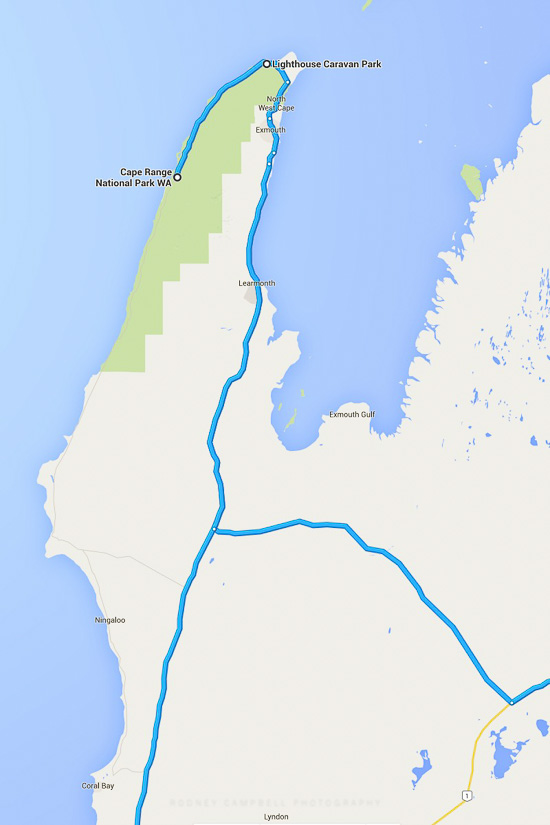
In ancient times the range was isolated as an island as rising sea levels inundated lower lying areas. As a result of this geographic isolation, there are some species of plants and animals that are endemic to the area.
There are in excess of 120 camping bays along the western shore of the Cape Range National Park, most of which are accessible via conventional vehicle. So we could see a lot of people camping as we made our way along the coastal road.
We stopped at a few spots to walk out and explore the coastline, it is rugged and beautiful.
Crashing
Note: These photographs (especially the wider shots) look much better when larger – so click any of the images below to see larger versions in an inline overlay slideshow gallery viewer.
Then we headed to Mandu Mandu Gorge. It’s a nice 3km return walk along not so well marked trails into the gorge.
Mandu Mandu Gorge
This is a ten (10) frame stitched panorama of the gorge (shot handheld). My daughter is a tiny speck over on the far left side (you can only tell when zoomed to 100% :)).
Directional
Vlamingh Head Lighthouse…
by Rodney Campbell on Apr.10, 2016, under Life, Photography
The Vlamingh Head Lighthouse is located 17km north of the Exmouth townsite. The site offers spectacular views of Ningaloo Reef and is a great vantage point to witness the famous Ningaloo sunset from its elevated location on a hill. The Lighthouse overlooks Lighthouse Bay and has the distinction of being one of the few places in Australia where you can watch the sun rise and set.
Completed in 1912 it stands on the northernmost tip of the Cape Range. The Lighthouse operated for over 60 years but in 1969 a light was mounted on tower 11 at the US Naval Communications VLF site. To this day this light still flashes a warning to seafarers to “beware of the treacherous coastline of the North West Cape”.
Vlamingh Head Lighthouse
In the image above we are looking slightly west of north. Besides the lighthouse and the great view you can see the caravan park we were staying in down below at the base of the hill and the faint lines of the thirteen towers of the massive VLF array against the sky in the distance.
Note: These photographs (especially the wider shots) look much better when larger – so click any of the images below to see larger versions in an inline overlay slideshow gallery viewer.
My daughter, my mother and I had come up here to check out the view and watch the sunset. We had some lovely clouds and some colour and they were slowly moving through the sky. It was time to accentuate this with some very long exposures. With lots of cloud about to block the sun it was already getting fairly dark by 6PM (sunset was at 6:05PM) so I only needed the Lee LittleStopper to get out to five minute+ exposure times.
Vlamingh Streaks
Last shot of the evening – 6:30PM – it was getting quite cold now so the ladies were keen to leave :).
Vlamingh Head Set
Exmouth…
by Rodney Campbell on Apr.09, 2016, under Life, Photography
Exmouth is a town on the tip of the North West Cape in Western Australia. It is located 1,270 kilometres north of Perth and 3,366 kilometres southwest of Darwin in the Northern Territory where we started this trip.
Liquid Emerald
The town was established in 1967 to support the nearby United States Naval Communication Station Harold E. Holt. Beginning in the late 1970s, the town began hosting U.S. Air Force personnel assigned to Learmonth Solar Observatory, a defence science facility jointly operated with Australia’s Ionospheric Prediction Service.
We arrived in the township of Exmouth around midday and after having lunch and doing some shopping (this was the first real “town” we’d been able to resupply in for over a week) we headed out to where we’d be staying for the next two nights.
Little Australia
Past Exmouth you drive about six kilometres to the very tip where the massive towers of the VLF communication array is and another ten kilometres past that around the corner on the western coast is the Ningaloo Lighthouse Caravan Park.
We settled into our site and then my daughter and I went for a walk over onto the nearby beach to explore (just across the road from the park).
Show me the Love
The Ningaloo Coast is rough and rugged and amazingly beautiful with crystal clear waters. We explored the rocks and coral on the coast and even managed a phone call when intermittently we’d get 1 bar of reception :). We had fun looking for all the recognisable shapes and patterns in the fossilised coral embedded int he rocks along the coast.
Naval Communication Station…
by Rodney Campbell on Apr.08, 2016, under Life, Photography
Naval Communication Station Harold E. Holt is located on the northwest coast of Australia. It is 6 kilometres north of the town of Exmouth in Western Australia. The town of Exmouth was built at the same time as the communications station to provide support to the base and to house families of U.S. Navy personnel working there.
Naval Communication Station Harold E. Holt
Note: These photographs (especially the wider shots) look much better when larger – so click any of the images below to see larger versions in an inline overlay slideshow gallery viewer.
The Naval Communication Station provides very low frequency (VLF) radio transmission to United States Navy and Royal Australian Navy ships and submarines in the western Pacific Ocean and eastern Indian Ocean. With a transmission power of 1 megawatt, it is the most powerful transmission station in the Southern Hemisphere.
The station features thirteen gigantically tall radio towers. The tallest tower is called Tower Zero and is 387m tall, and was for many years the tallest man-made structure in the Southern Hemisphere. Six towers, each 304 metres tall, are placed in a hexagon around Tower Zero. The other six towers, which are each 364 metres tall, are placed in a larger hexagon around Tower Zero. Buried in the ground beneath the antenna array is 386 kilometres of bare copper ground mat.
Naval Communication Station
Coral Coast
